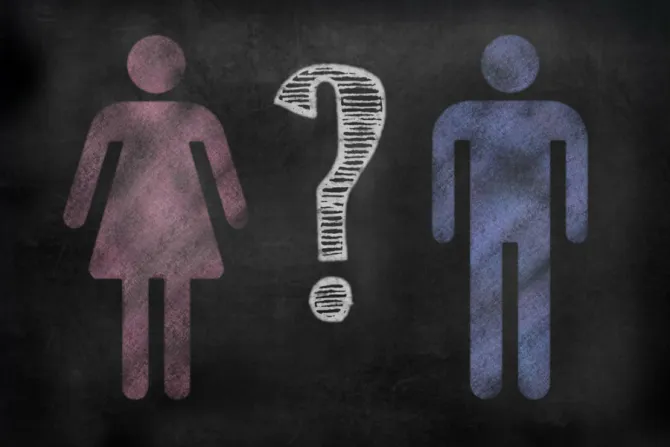Washington, D.C., Aug 27, 2016 / 06:09 am
For most young people who experience feelings of gender dysphoria, the experience is in fact temporary, and a non-heterosexual orientation is not as fixed as sometimes claimed, a new overview of the relevant research says.
"Only a minority of children who experience cross-gender identification will continue to do so into adolescence or adulthood," said the report, published in The New Atlantis Journal.
As many as 80 percent of men who reported same-sex attraction as adolescents no longer do so as adults. There were "similar but less striking" results for women. The idea of innate sexual orientation is "not supported by scientific evidence," the report said.
Titled "Sexuality and Gender: Findings from the Biological, Psychological, and Social Sciences," the report reviews various research studies to examine claims about sexuality and gender.
It was authored by Dr. Lawrence S. Mayer, Ph.D., a biostatistician and epidemiologist now a scholar in residence at Johns Hopkins University; and by Dr. Paul R. McHugh, M.D., a professor of psychiatry and behavioral sciences at Johns Hopkins University.
The report considers various claims like the basis and permanence of gender identity and sexual orientation.
It found there is a lack of scientific evidence for claims that gender identity is an innate property "independent of biological sex." Scientific evidence also does not support claims that a person might be "a man trapped in a woman's body."
Gender identity problems can arise for someone with Intersex conditions, where a person has ambiguous biological sex due to genetic abnormalities.
However, brain structure comparison of transgender and non-transgender individuals show only "weak correlations" between brain structure and cross-gender identification. These correlations are not evidence that this identity has a basis in the biology of the brain.
Similarly, sexual orientation's neurological basis can be overstated. Against the "born that way" claim, the report authors write: "While there is evidence that biological factors such as genes and hormones are associated with sexual behaviors and attractions, there are no compelling causal biological explanations for human sexual orientation."
The report also considered sexuality, mental health, and social factors.
Non-heterosexuals are two to three times as likely to have experienced childhood sexual abuse.
The authors weighed the evidence that non-heterosexual attractions, desires and behaviors may increase the risk of suffering sex abuse, or that sexual abuse may cause non-heterosexual attractions, desires and behaviors. They said that more research is needed before claiming a link between sex abuse and non-heterosexual attractions.
Non-heterosexuals do face elevated risk of adverse health and mental health outcomes. They are estimated to have a 1.5 times higher risk of anxiety and substance abuse than the heterosexual population. They face double the risk of depression and 2.5 times higher risk of suicide.
The transgender population, recently estimated to make up 0.6 percent of the total population, suffers a lifetime suicide attempt rate of 41 percent, compared to 5 percent of the overall population.
There is "limited, inconsistent and incomplete" evidence that social stressors like discrimination and stigma "contribute to the elevated risk of poor mental health outcomes for non-heterosexual and transgender populations."
The report said clinicians and policymakers should not assume that models focused on social stressors offer a complete explanation for these health differences.
"Just as it does a disservice to non-heterosexual subpopulations to ignore or downplay the statistically higher risks of negative mental health outcomes they face, so it does them a disservice to misattribute the causes of these elevated risks, or to ignore other potential factors that may be at work."
(Story continues below)
Adults who undergo sex reassignment surgeries continue to show a high risk in mental health, being about 5 times more likely to attempt suicide and 19 times more likely to die by suicide compared to a control group.
Regarding therapies for children that delay puberty or modify sex characteristics of adolescents, there is "little scientific evidence" for their therapeutic value, the report said.
At the same time, "some children may have improved psychological well-being if they are encouraged and supported in their cross-gender identification."
"There is no evidence that all children who express gender-atypical thoughts or behavior should be encouraged to become transgender," the report added.


